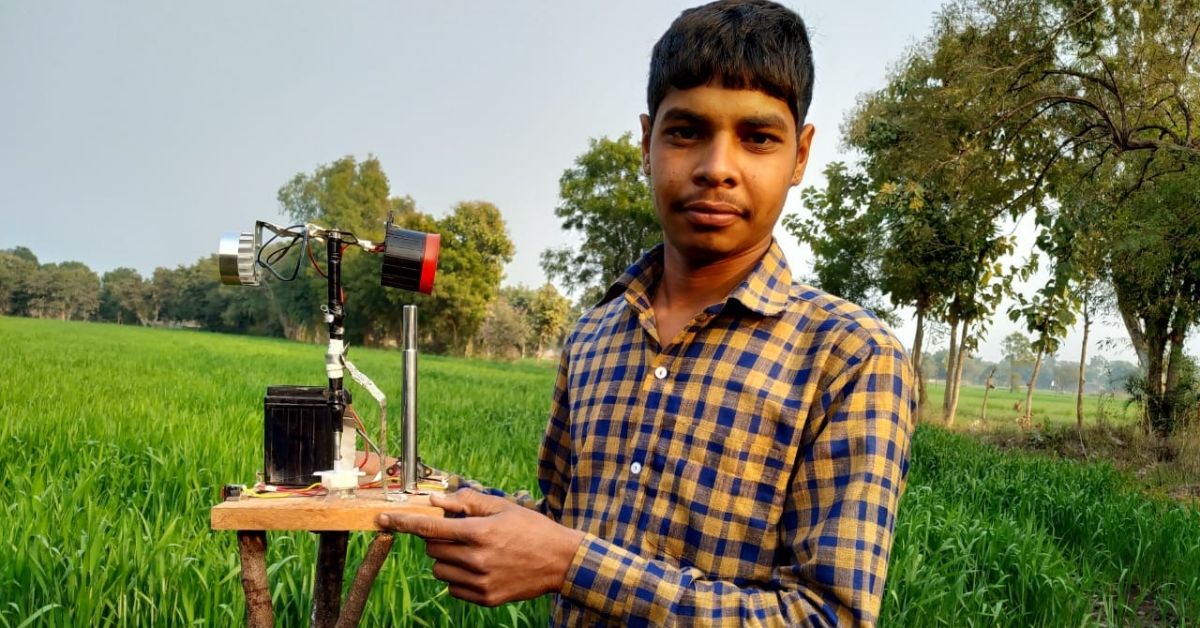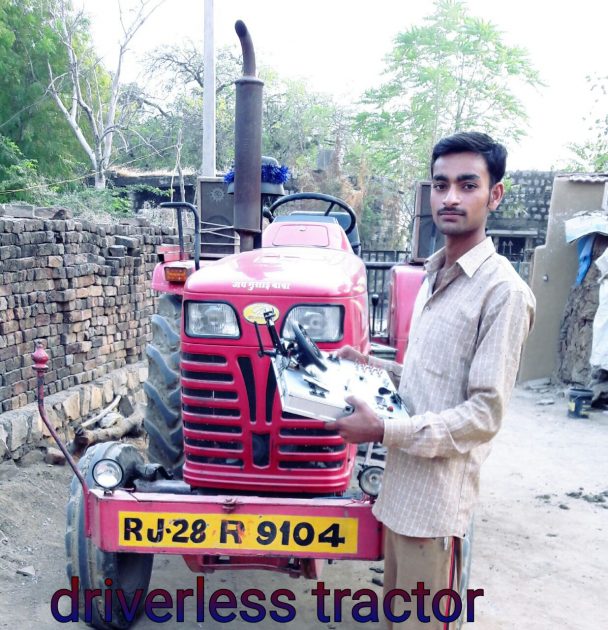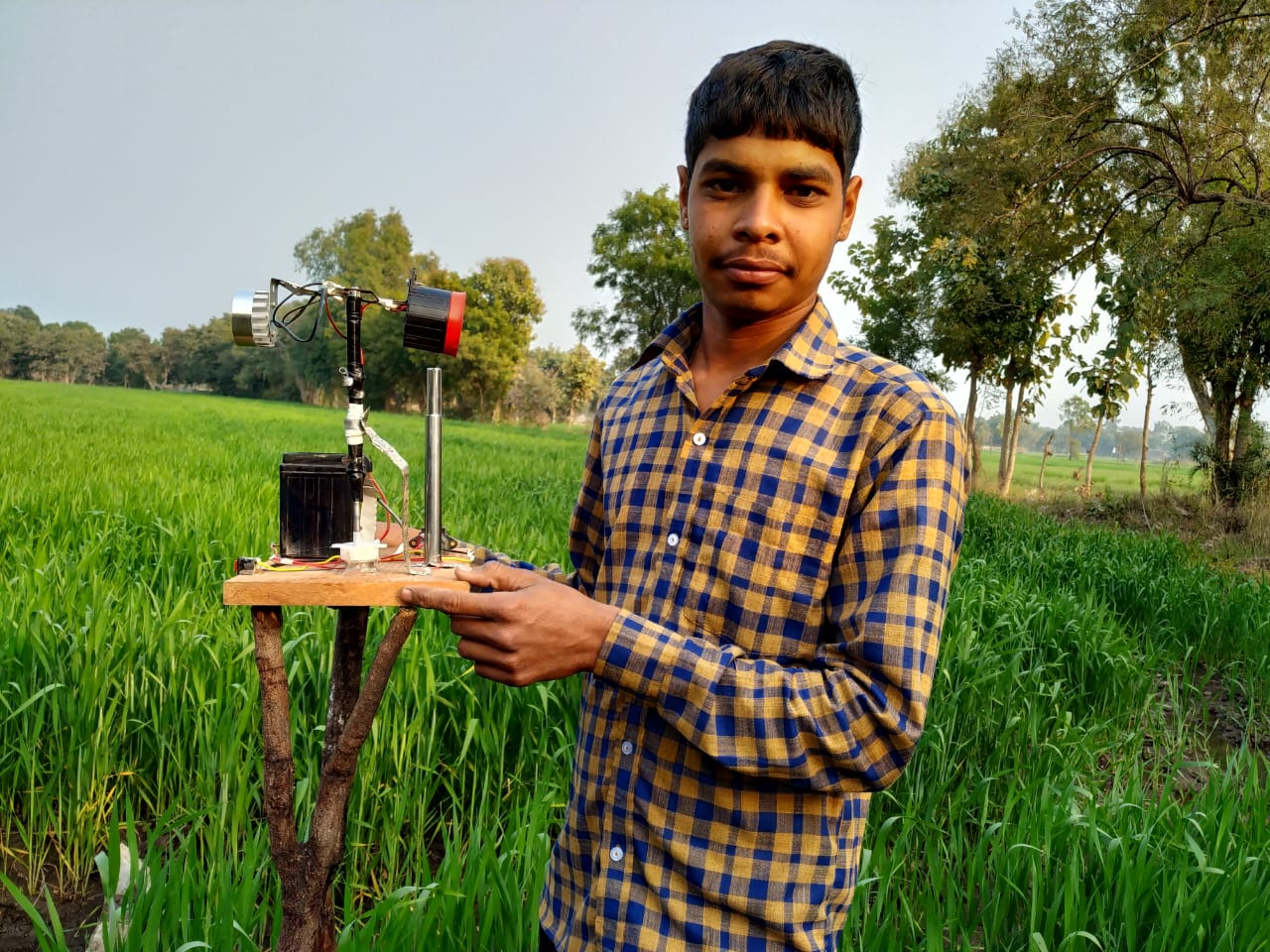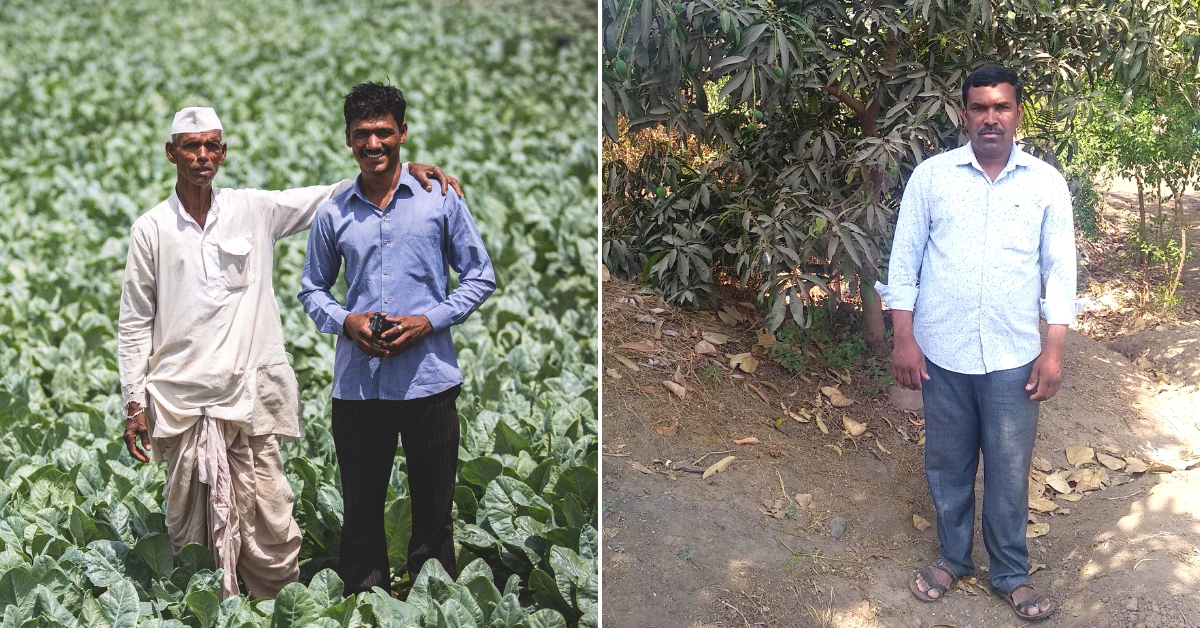Driverless Tractors & Diya ‘Guards’: How Low-Cost Innovations Can Transform Farms
"Who better to understand the issues of a farmer than a farmer himself,” says Narayan, who has developed several 'jugaad' tactics to make farming less cumbersome and more profitable!

They say that necessity is the mother of invention and if your family, struggling in the field every day, isn’t motivation enough, little else can be. Yogesh and Narayan are both farmers-cum-innovators who have resolved the problems in their respective fields—pun intended—with brilliant devices. The Better India (TBI) spoke to them about how their low-cost innovations have helped them in their farms and why it is crucial for more agro-centered innovations in the country.
Yogesh Nagar had been studying for his exam in Kota when his phone rang bringing bad news. His father was severely ill and had been prescribed strict bed rest by the doctor.
If some can make innovations in large fields, you can start a mini-farm in your house itself. All you need is wet waste and your balcony can become a farm! Go to The Better India Shop to check out these compost kits.
The dutiful son, a first year engineering student, knew what that meant. With no one to work on the family’s farm, his family’s income was in threat of drying up. Yogesh had no option but to quit his studies and rush to the family living in Baran, Rajasthan.
“After I returned home, I truly understood the difference between an informed advisor and an unlettered one. My father’s health was deteriorating and as is the norm back home, before he consulted doctors, he shared this condition with his friends. He told them that he is so ill, he can’t drive a tractor anymore.
“His good-intentioned yet less informed friends were quick to advise that if that is the case, it will be best if he hires a driver to carry out this task,” the 22-year-old tells TBI.

Accordingly, his father paid between Rs 1-1.5 lakh per annum to drivers to plough his 6-acre field.
To contribute to the work and cut costs, Yogesh started driving the tractor, which he soon found wasn’t an easy thing to do. He understood that a slight acceleration or sudden brake may result in the furrows being too deep or too shallow. Driving tractors to plough the fields took precision and experience, especially when one is looking at acres of farmland.
Yogesh wanted to do something to reduce the expense of hiring the drivers and also bring uniformity in the way the fields were ploughed without any glitches. The young man’s love for and knowledge of engineering came to his aid to resolve this problem. Several trial and errors and experiments later, Yogesh was able to invent a driverless tractor to meet his requirements! You can read about this in detail here.
What he learned through his experience is that technology might be bounding forward in India in many areas, but its intervention in agriculture is at a glacial pace.
“We are an agricultural country, and it is surprising how slow our technological advancements are in this sector. A majority of our farmers do traditional farming and for generations, we have seen little to no change in how we work. No wonder then that agriculture seems to be a lot of effort and yet we pocket only marginal profits.”
“If we are to develop innovations in this sector, it could aid the farmer tremendously. Take my case for example. Even the slightest of problems, such as uneven furrows, sowing of seeds in an irregular fashion and losing out on good days because the labourers had other commitments were instantly resolved with simple automation. Of course, it took me months of dedication and even failure, but I endured. If I can, there’s no reason why others cannot push for technological development too,” he adds.
Some 250 km from Yogesh’s hometown, in Chittorgarh, young Narayan Lal Dhaker had grown up watching his single mother struggle on the farming field. His mother had been pregnant with Narayan when her husband passed away, leaving the young woman to take care of their 2-year-old twin daughters and the still-to-be-born son.
Fortunately for the Dhaker family, they owned a 7.5-acre-farmland and Narayan’s mother could hire labourers to work on it.

But when the human resources were sparse, she had no other option but to pick up the tools herself with her three young ones watching helplessly.
From a diya (lamp) in a large oil can to drive away wild Nilgai from the farm to using the technique of multi-cropping in his fields, Narayan has undertaken several jugaad to boost crop productivity.
You can read all about it here.
He explains why it is in the hands of the farmers to not just pick up their farm equipment but also use innovation as a tool in their lands.
Who better to understand the issues of a farmer than a farmer himself, says the farmer who is currently in the third year of his graduate studies.
Narayan adds, “The farmer thinks about his profits for obvious reasons and so he can identify the obstacles that are keeping him away from his farm’s full potential. Through innovative ideas, he tries to resolve them and forms his own system on a micro-level. There are hardly any innovations in the market which is why a farmer is left to fend for himself. It is up to the NGOs and the governments to take these innovations further, connect farmer to farmer so everyone has to think of new ways to help himself.”
The app, Plantix, supports Narayan’s view that through innovative ideas farmers can resolve many problems.

Though developed by a couple from Brazil, the app is showing tremendous potential in India. The mobile application has a large database of botanical information—everything from plant identification to the diseases they can be infected with. A farmer needs to simply click the image of the plant and upload it to access detailed explanation.
And this simple app, which can be downloaded for free, is proving to be a boon for lakhs of farmers. Take the case of Devidas Lonkar from the Chakan town of Pune. Tired of the infections ruining his farms and the money he had to invest in pesticides, Lonkar finally downloaded Plantix. Speaking to TBI, he said, “I would describe the symptoms of fungus or disease to the shopkeeper, to which he would then suggest various pesticides and add-ons. It took me a while before realising that these shopkeepers only suggested chemicals having short-lived efficiency that would inevitably bring farmers back to them within a couple of months. This app ended up saving me a lot of money as well as time. Sitting at home, I can now diagnose plant diseases and have already saved about Rs 1-1.5 lakh in a year that I would otherwise spend on fertilisers.”
Navnath Raghunath Yawale, another farmer who swears by the app shares, “I travelled from my village to Pune city to find out what fungus or diseases were plaguing my crops. I used to spend around Rs 35,000-40,000 just on fertilisers and pesticides but to no avail. Thanks to Plantix, I can check the health of my crops without leaving my home. In last one year, I’ve managed to save between Rs 5,000-10, 000 easily,”
Narayan and Yogesh would agree that their devices have certainly reduced labour costs and increased the yield of their farms. Farmers like Lonkar and Akash are not too far behind in this belief. If agricultural innovations are given the boost and exposure they deserve, perhaps the sector wouldn’t suffer as much as it does currently.
It is innovations like these that ATL Tinkering Innovation Marathon aims to develop by giving young innovators a platform to take their ideas to products and help solve issues in different fields from agriculture and infrastructure, to environmental conservation and waste management.
Know more about the ATL Tinkering Innovation Marathon here.

(Edited by Saiqua Sultan)
Like this story? Or have something to share? Write to us: [email protected], or connect with us on Facebook and Twitter.
This story made me
- 97
- 121
- 89
- 167
Tell Us More
We bring stories straight from the heart of India, to inspire millions and create a wave of impact. Our positive movement is growing bigger everyday, and we would love for you to join it.
Please contribute whatever you can, every little penny helps our team in bringing you more stories that support dreams and spread hope.



















